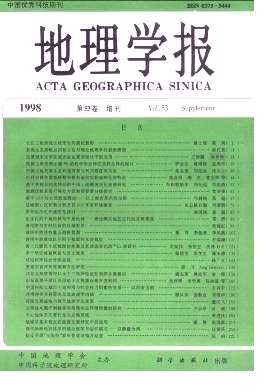Qi Qingwen, Liu Yue
Cartographic Generalization has long been the key problem in cartography, and are becoming one of the most attractive and leading problems in the international realm of GIS. This paper sumarizes the author’s research on the theories and approaches of Geographic feature oriented Generalization in GIS environment (GGGEN). The paper contains five parts, i.e., the information mechanism, the theoretic models, the method of mathematic models combined with knowledge rules, and the development of integrated module of generalization of GGGEN. The author’s conclusions are as follows: ① Scientific cognition on geographic feature and geographic regularity, i.e., Geographic Cognition, is the subjective and objective basis of generalization for geo maps or geo databases, and it goes through each mapping stages, e.g., the designing stage, the map constructing stage, and verifying stage. ② The motives of generalization in GIS environment are no longer for only adapting graphic representation with the decreased scale, and generalization is a kind of method and technology not only for data and graph transformation for geographic data representation, but also for GIS data processing, integration, analysis and database derivation. The functions of GGGEN’s information processing include its generalization on the spatial distributive pattern of geo objects and its filtering on the complex geographic information. ③ The traditional concept of generalization, i.e., transformation from one paper map to another, is an obstacle of automated generalization, which should be realized in GIS database environment, through two stages as data processing and graphic representation, on the model of “object classes” inheritance and mergence, using the technology of integrating GIS tool, mathematic model base and expert system. That is to say, GGGEN is a kind of stepped information processing, which starts from geo data analysis and treatment in database, and ends at geo data visualization, i.e., graphic representation. The visualization principles have very important guidance to generalization. ④ From concrete view to detailed view, there are four levels of theoretic models for GGGEN, in which the first level is the database model scheme, i.e., the scheme from DLM to DCM, the second level is database hierarchical structure scheme, i.e., the scheme of Master Database Multiple Representation, the third level is the scheme of Knowledge and Object Based Procedure, and fourth level is the Generalizing Model of Geo Object and Class Inheritance and Incorporation, which is the kernel part of Geographic feature Oriented Generalization. ⑤ The combination of mathematical models and intelligent rules should be, and really is, a kind of prosperous approach to automatic generalization, in which the former function acts as concrete operations,while the latter,including structure recognition,course recognition,course modeling,assessment of final output,decision of the next operation,deals with the judgment and linkage of various operations. ⑥ By using the GGGEN module in GIS, which includes a generalization operator set with the Math Model base, a generalization inference engine with the knowledge base, and a GIS tool set with GIS environment, the author obtain satisfactory results for representing the natural landscape feature of Yanqing County, Beijing Municipality, and the humanistic landscape feature of transportation network in Zhujiang Delta Economic Zone.
